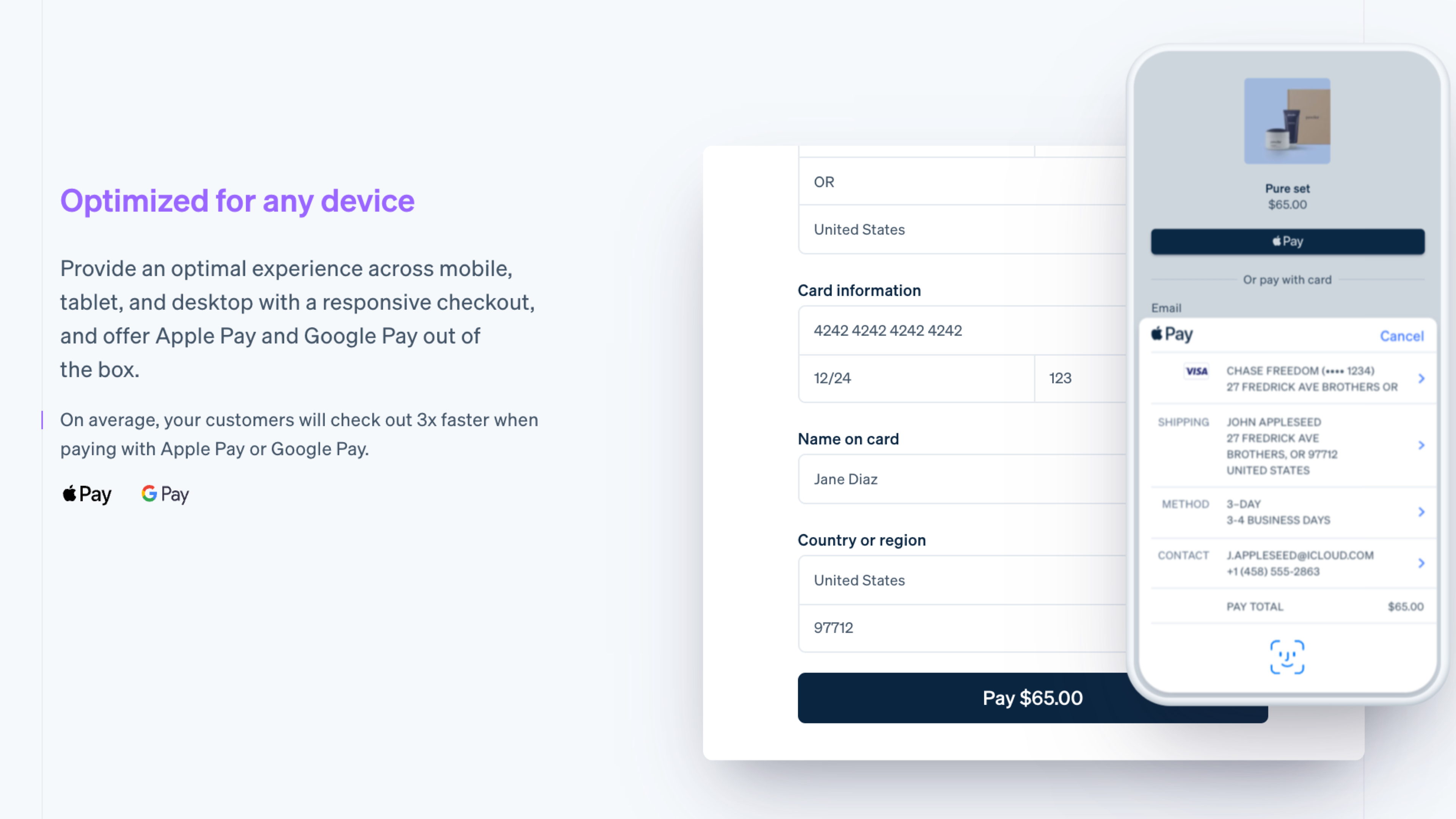
- #Stripe checkout how to#
- #Stripe checkout install#
- #Stripe checkout upgrade#
- #Stripe checkout code#
- #Stripe checkout free#
#Stripe checkout install#
We'll make more use of this in a bit but for now, we need to install the CLI. This is great for listening for events locally on your machine as opposed to the old way of having to trigger test events from your Stripe account. # GemfileĪ newish useful tool from Stripe is their CLI.

However, if you are using the template, consider this step complete. If you're not using my template be sure to add the line below to the Gemfile inside your app making sure to keep it outside any development or test groups. We also need to use the Checkout API to display things correctly on the front-end. We will need to leverage the Stripe Ruby gem to make API calls from the server-side portion of the app. Stripe has both a front-end and back-end (server-side) responsibility. Configuring your application to use Stripe If not you should see the default rails hello world page. Navigating to localhost:3000 should render my template's index page if you're making use of it. This should fire up two processes which you can find in v: Be sure to run gem install foreman before continuing. If this doesn't work for you, it probably means you don't have the foreman gem installed. You may need to supply something more elaborate.įrom here I'll cd into stripe_checkout_portal_tutorial and run bin/dev.
#Stripe checkout code#
Assuming you have a similar path you can copy and paste the code above. I cloned that application into my current workspace.
#Stripe checkout free#
You're free to skip but there might be some discrepancies in your results as you follow along here. This command creates a new app and locally references an application template I created to help speed up some default configurations I tend to use. Generate a new app: $ rails new stripe_checkout_portal_tutorial -m kickoff_tailwind/template.rb With Rails 7 comes some new defaults which are no longer reliant on Webpack. You'll need Ruby version 2.7.0 or newer.) for this tutorial. We'll make use of Rails 7 ( gem install rails should get you the latest version. Once you find your API keys we can kick off the app build ✨. Be sure to never commit your private key to version control unless it's encrypted (Encryption is something modern versions of Ruby on Rails helps with and that we will utilize coming up). Your public key can be public, (as if that wasn't already obvious) but your private key should be treated as a secure password. Accessing the API is possible through a set of API keys issued when your account gets created.Īs of right now, Stripe issues a private and public key.
#Stripe checkout upgrade#
It's versioned based on your account so you can upgrade to a new version whenever you decide. Stripe's API is one of the best out there. Head to to create an account and circle back here. Eventually, to accept real payments, you will need to activate your account (provide your billing information). In a "testing" state you won't need to have your account activated. To get started you will need a Stripe account. My goal with this tutorial is to use built-in tools straight from Stripe that allow you to get billing done in less than a day. If you need more control that'd be a great avenue to explore. The gem provides more of a customized approach towards billing in a given rails app. We won't be leveraging that gem for this tutorial but I wanted to mention it to avoid any confusion since it comes pre-installed within the template. If you look under the surface in this guide you'll notice another gem called pay-rails is in use. It saves me time when doing these types of tutorials though often the defaults it provides are overkill. In this guide, I use an application template called kickoff_tailwind.

One could argue that Ruby on Rails is overkill for this concept but think of it as room to grow 😉. To get access to more content you would pay a subscription fee in a recurring fashion. Goalsįor this guide, I'll be building a small premium content-based app for purely demonstration purposes. Stripe Customer Portal - Give your customers a place to easily manage their current subscription(s). Stripe Checkout - Offer subscriptions or fixed-price products for sale in a convenient and secure checkout UI. These two offerings complete the circle of a complete billing solution that's nearly drop-in.
#Stripe checkout how to#
This is a concise guide on how to add Stripe Checkout and Stripe Customer Portal to your Ruby on Rails app. While Stripe Checkout is simple at face, there are a few important steps to take when adding it to a Ruby on Rails app for maximum security and compatibility.

Stripe is a platform that enables so many entrepreneurs to branch out and make their way to building products, tools, and services that can be paid for digitally and in many varied formats. Accepting payments has become easier than ever.


 0 kommentar(er)
0 kommentar(er)
